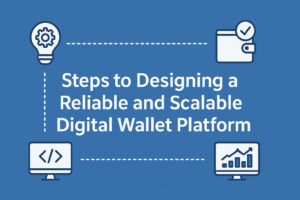Electronic Medical Records (EMR) and Electronic Health Records (EHR) systems have moved far beyond simple digital filing cabinets. In Australia, tailored EMR/EHR software development is reshaping how clinics deliver care, manage workflows, protect patient data, and connect with the broader health ecosystem. For clinics of every size — from solo GP practices to multi-site community health centres — investment in the right technology is no longer optional. It’s a strategic necessity. If you’re considering a partner, look for a trusted healthcare software development company in australia to ensure local compliance, integration and clinician adoption.
Why EMR/EHR matters now
Several forces make EMR/EHR adoption urgent for Australian clinics:
-
Rising patient expectations for fast, coordinated, and digitally accessible care.
-
Increasing complexity of chronic disease management requiring longitudinal records.
-
Greater emphasis on data-driven decision making and quality reporting.
-
Regulatory and interoperability pressures that push clinics to standardise records and share data securely.
When done right, modern EMR/EHR systems free clinicians from administrative burden and enable them to spend more time on what matters most: patients.
Core ways EMR/EHR development is transforming clinics
1. Streamlined clinical workflows and reduced administrative load
Custom EMR/EHR solutions automate repetitive tasks — appointment scheduling, billing codes, prescription renewals, and recall systems. Workflow automation reduces human error, accelerates documentation, and shortens patient wait times. By embedding clinical decision support (for example, allergy alerts or guideline-based reminders), EMR/EHRs help clinicians make safer, faster decisions without interrupting their routine.
2. Better continuity of care and integrated records
Modern systems consolidate patient history, lab results, medication lists, imaging and referral notes into a single, searchable record. That longitudinal view is vital for chronic conditions such as diabetes, heart disease and mental health disorders. Integration with hospitals, pathology labs and national services (e.g., My Health Record) gives clinicians a fuller picture, reducing duplicated tests and improving care coordination.
3. Telehealth and remote monitoring baked into practice
EMR/EHR development now routinely includes telehealth modules and remote monitoring integrations. Video consults, e-prescribing after virtual visits, and automated capture of remote device readings (blood pressure, glucose, weight) feed directly into the patient’s record. This reduces fragmentation and creates a seamless digital care experience — essential in rural and regional Australia where travel and access barriers are real.
4. Data-driven quality improvement and reporting
Built-in analytics allow clinics to track population-level metrics (immunisation rates, screening uptake, chronic disease control) and quickly generate reports for funding bodies or accreditation. Custom dashboards help clinicians spot high-risk patients, manage recalls, and measure the impact of care interventions — turning raw data into actionable insights.
5. Improved patient engagement and access
Patient portals and mobile apps that connect to EMR/EHRs let people view results, request repeat prescriptions, book appointments, and message their practice securely. When patients can access their own records and administrative tasks online, satisfaction and adherence improve — and administrative workload for clinic staff drops.
6. Stronger privacy, security, and compliance
Australian clinics must comply with the Privacy Act and the Australian Privacy Principles. Tailored EMR/EHR development helps enforce role-based access control, encryption, secure audit logs, and data residency rules. Local providers understand the regulatory landscape and can architect systems that meet both legal and clinical requirements.
Key technical features to prioritise in development
When commissioning or selecting EMR/EHR software, clinics should prioritise:
-
Interoperability: Standards-based APIs (FHIR, HL7) and secure messaging to connect with hospitals, labs and My Health Record.
-
Usability: Clinician-centred UX that minimises clicks, supports templates and voice-to-text dictation.
-
Scalability & performance: Fast access to records even as patient numbers grow.
-
Security & compliance: End-to-end encryption, multi-factor authentication, comprehensive audit trails.
-
Customisability: Ability to tailor templates, pathways and reporting to the clinic’s specialties.
-
Offline capability: For regional clinics with intermittent connectivity, reliable offline access and later sync is essential.
-
Analytics & reporting: Built-in dashboards and exportable reports for compliance and quality improvement.
The role of a local healthcare software development company
Partnering with a healthcare software development company in australia offers clear advantages:
-
Regulatory knowledge: Familiarity with Australian privacy law, My Health Record integration, and local clinical coding norms.
-
Local support and training: On-site or time-zone aligned support for faster problem resolution and clinician training.
-
Contextual design: An understanding of the Australian healthcare landscape — Medicare billing, practice incentives, and rural health needs — leads to better product fit.
-
Easier collaboration with local stakeholders: Relationships with pathology providers, hospital IT teams, and Primary Health Networks can smooth integrations.
Real-world benefits clinics typically see
Clinics that invest in modern EMR/EHR solutions often report:
-
Reduced average consultation documentation time.
-
Faster prescription turnaround and fewer medication errors.
-
Improved recall and screening rates.
-
Lower administrative overhead and fewer phone calls for routine matters.
-
Better patient satisfaction and retention.
These benefits contribute to both better clinical outcomes and stronger financial performance for the practice.
Overcoming adoption challenges
Change management is the linchpin of successful EMR/EHR deployment. Common barriers include clinician resistance, poor training, and mismatched workflows. To overcome these:
-
Involve clinicians early in design and testing.
-
Run staged rollouts with shadowing and superuser programs.
-
Invest in high-quality training tailored to each role.
-
Start with quick wins (e.g., e-prescribing, appointment automation) to demonstrate value early.
-
Choose a vendor that offers ongoing optimisation and listens to feedback.
Looking ahead: AI, predictive care and personalised medicine
Emerging EMR/EHR features — like predictive risk scoring, automated coding, and AI-assisted clinical notes summarisation — are already starting to appear. When integrated carefully, these capabilities can prioritise preventive care, reduce clinician fatigue, and personalise treatment plans. Clinics that build flexible, data-rich records now will be best placed to take advantage of these innovations responsibly.
Conclusion
EMR/EHR software development is not merely a tech upgrade; it’s a transformation of how clinics operate, deliver care, and engage patients. For Australian clinics, choosing the right implementation partner is critical. A local healthcare software development company in australia can provide the regulatory insight, integration expertise and user-centred design needed to deliver systems that clinicians trust and patients benefit from. Invest in a thoughtful EMR/EHR strategy now, and your clinic will reap operational efficiencies, safer care, and stronger patient relationships for years to come.

